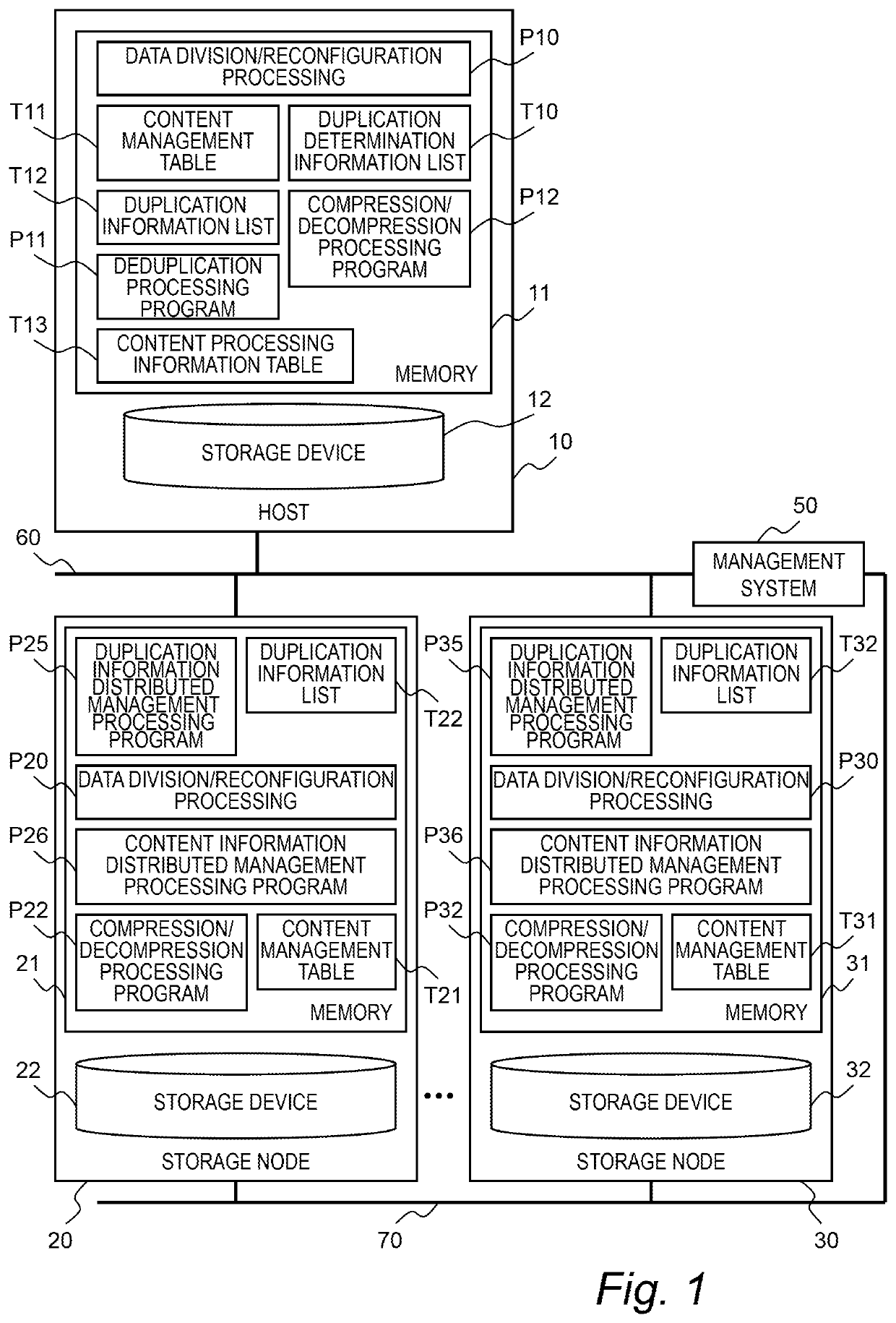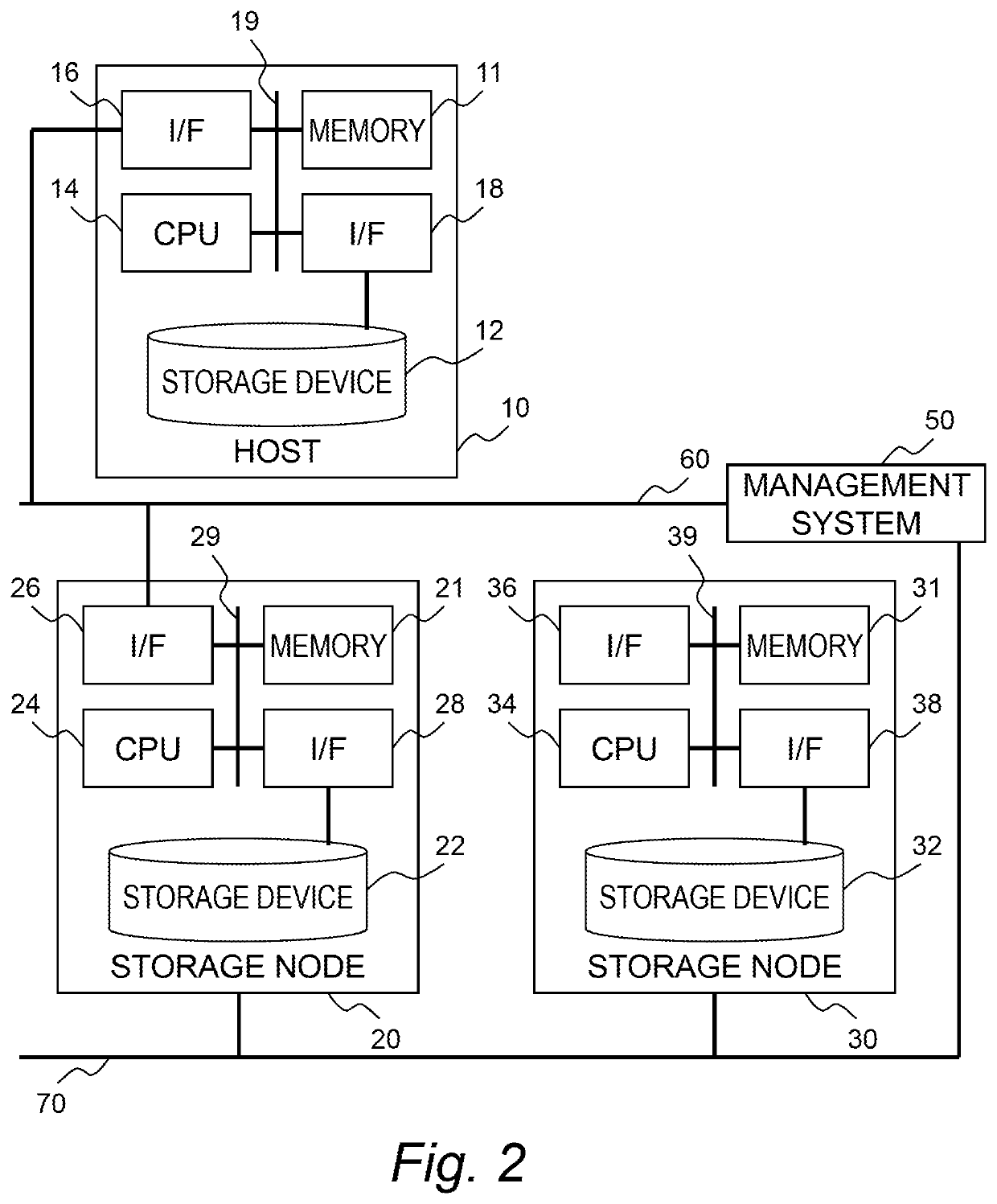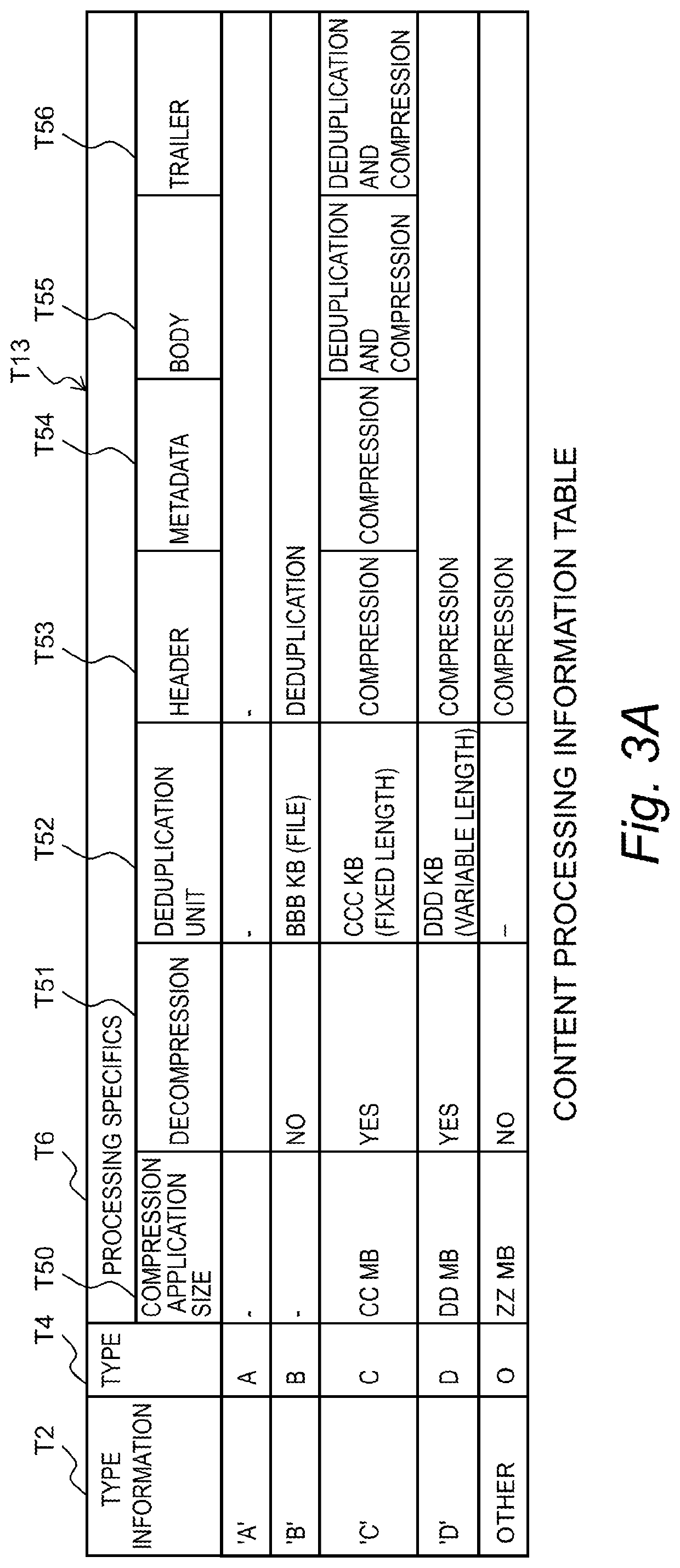Computer system, storage apparatus, and method of managing data
a computer system and data management technology, applied in computing, input/output to record carriers, instruments, etc., can solve problems such as system performance drops, and achieve the effects of efficient deduplication processing, increased processing load, and system performance drop
- Summary
- Abstract
- Description
- Claims
- Application Information
AI Technical Summary
Benefits of technology
Problems solved by technology
Method used
Image
Examples
first embodiment
[0040]FIG. 1 is a diagram for illustrating the logical configuration of a computer system according to a first embodiment of this invention.
[0041]A host 10 transfers data to a distributed storage system (storage nodes 20 and 30). The host 10 can be a storage system, a personal computer, a server computer, a smartphone, or the like that is set up in a branch of a company. The host 10 includes a processor 14 illustrated in FIG. 2, which executes a program, and a memory 11, which stores a program and data. The memory 11 of the host 10 stores a data division / reconfiguration processing program P10, a deduplication processing program P11, and a compression / decompression processing program P12. The memory 11 further stores a duplication determination information list. T10, a content management table T11, a duplication information list T12, and a content processing information table T13.
[0042]The duplication determination information list T10 holds a unique ID (a hash value or the like) for...
second embodiment
[0196]In the first embodiment, the performance of data transfer between the host 10 and the distributed storage is improved by reducing the data amount only on a communication path between the host 10 and the distributed storage. In the second embodiment, data is reduced not only on the communication path between the host 10 and the distributed storage, but also in the entire host 10 and the entire distributed storage. In the second embodiment, only configurations and processing different from those in the first embodiment are described, and descriptions on the same configurations and processing as those in the first embodiment are omitted.
[0197]FIG. 13 is a diagram for illustrating the logical configuration of a computer system according to the second embodiment.
[0198]The computer system according to the second embodiment differs from the computer system according to the first embodiment in that the content processing information table T13 and deduplication processing programs P21,...
third embodiment
[0212]A distributed storage system in a third embodiment of this invention uses the content processing information table T13 to execute data reduction processing for data transferred from the host 10 that is not reduced in data amount. Only differences from the first embodiment and the second embodiment in configuration and processing are described in the third embodiment, and descriptions on the same configurations and processing as those in the first embodiment and the second embodiment are omitted.
[0213]The storage nodes 20 and 30 in the third embodiment bear the data amount reduction function that is assigned to the host 10 in the embodiments described above. Specifically, the reception node 20 in the second embodiment performs the same operation as that of the host 10 to reduce the data amount, and acts in cooperation with the other storage node, namely, the storage node 30. In the data amount reduction, the way the duplication information list obtaining range is expressed is v...
PUM
 Login to View More
Login to View More Abstract
Description
Claims
Application Information
 Login to View More
Login to View More - R&D
- Intellectual Property
- Life Sciences
- Materials
- Tech Scout
- Unparalleled Data Quality
- Higher Quality Content
- 60% Fewer Hallucinations
Browse by: Latest US Patents, China's latest patents, Technical Efficacy Thesaurus, Application Domain, Technology Topic, Popular Technical Reports.
© 2025 PatSnap. All rights reserved.Legal|Privacy policy|Modern Slavery Act Transparency Statement|Sitemap|About US| Contact US: help@patsnap.com



